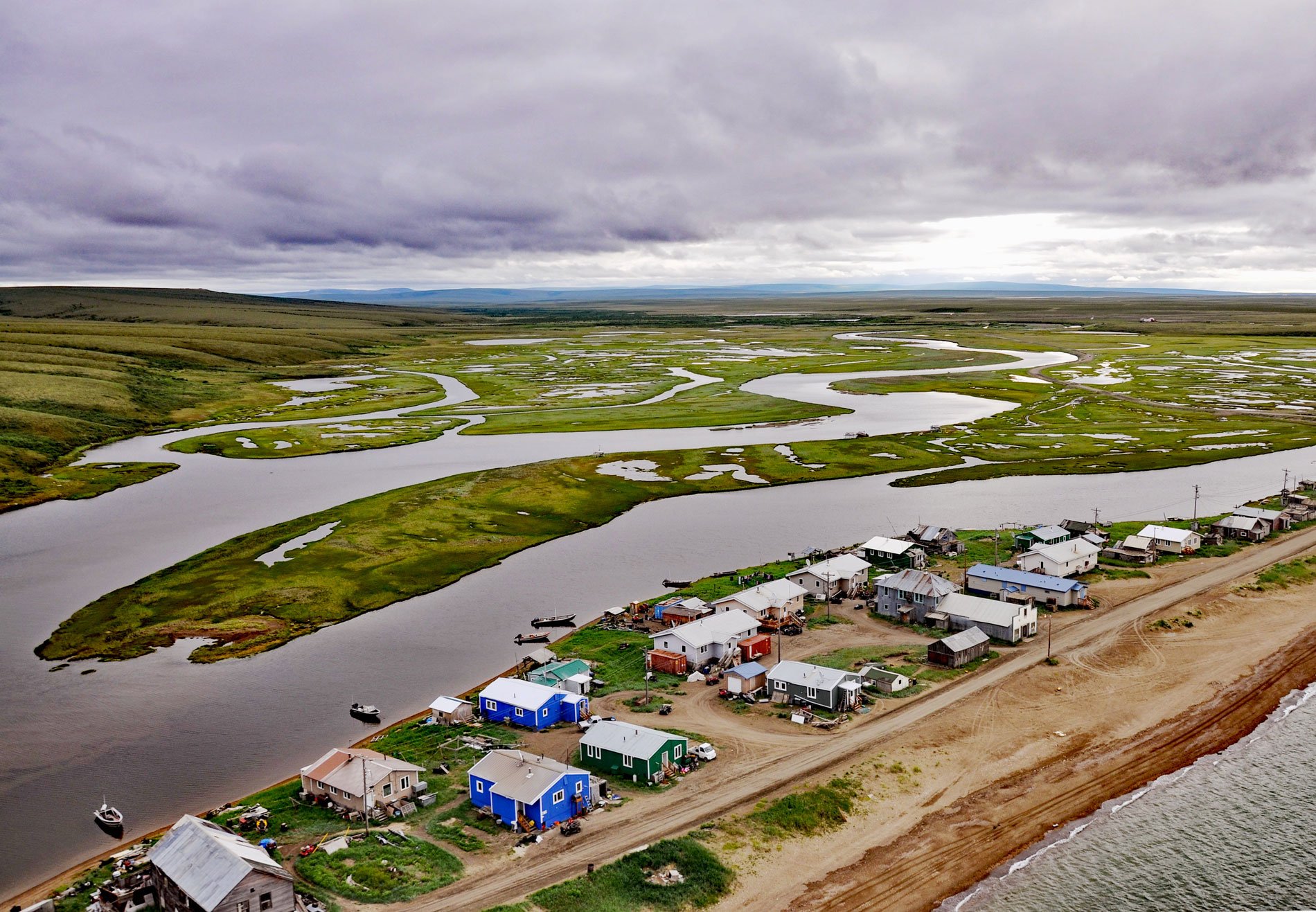Deering is a community situated on a barrier spit at the mouth of the Inmachuk River on Kotzebue Sound on the northern coast of the Seward Peninsula between Cape Deceit to the west and Ninemile Point to the east, about 155 miles (250 km) east-northeast of Point Hope and 57 miles (92 km) south of Kotzebue, Alaska. The Inmachuk River starts at an elevation of roughly 1600 feet (488 m) and flows generally north-northeast for 30 miles (48 km) to Kotzebue Sound draining a watershed of 163,412 acres (66,130 ha). The Fairhaven Ditch is a historic canal 38 miles (61 km) long dug by miners in 1906 and 1907 without the benefit of heavy equipment and was used to transport water from Imuruk Lake, the largest body of fresh water on the peninsula, to mining areas along the Inmachuk and Kugruk rivers to the north. Deering was established at the site of an Iñupiaq fish camp in 1901 as a supply station, particularly for the gold mining community of Utica located 20 miles (32 km) upstream on the Inmachuk River. The settlement was probably named for Abbie M. Deering, a schooner of 90 feet (27 m) that provided transportation for gold seekers in western Alaska. The Seward Peninsula is underlain mostly by metasedimentary rocks comprising the Kigluaik and Nome groups of early Paleozoic or older age. Collectively these rocks can be considered a sequence of limestone, biotite gneiss, slate, quartzite, dark phyllite, and schist, cut locally by small bodies of greenstone and granite. Quaternary gravels blanket the low-lying coastal areas and occur in all the major stream valleys such as the Inmachuk River which attracted miners to the Fairhaven mining district in the early 1900s. The placer mines remained active until 1957 and collectively produced 578,000 ounces (16,386 kg) of gold.
The Seward Peninsula is part of Beringia, a land bridge that facilitated human migration across the Bering Strait from Asia to North America during the Last Glacial Maximum, and the northern coast has some of the most significant archaeological sites in the western Arctic. Archaeological research carried out since 1949 has identified at least three prehistorical cultures present along the spit and on the adjacent headland at Cape Deceit including Ipiutak, Western Thule, and historical Iñupiat peoples. Beginning around 2,000 years ago, the archaeological record indicates that a new culture emerged from antecedent Alaskan Birnirk and Siberian Punuk cultures in the Bering Strait region and is called the Northern Maritime tradition. This culture is recognized by the extensive use of ivory, elaborate artistic engravings on hunting equipment and ritualistic objects, and their near-total reliance on marine resources for subsistence. By about 1000 AD, the Northern Maritime tradition morphed into a group that is widely referred to as the Thule tradition who are the direct ancestors of Inuit, Iñupiat, and Yup’ik people. The north coast of the Seward Peninsula has been inhabited by two Iñupiat groups. The Kangigmiut occupied the Buckland River drainage, the Kiwalik River drainage, and the coast of Eschscholtz Bay. The Pittagmiut lived to the west along the rivers flowing into Goodhope Bay and the coast from Cape Espenberg to Motherwood Point.
The historical Pittagmiut village at the mouth of the Inmachuk River was built on a series of beach ridges that were formed over 2000 years by the progradation of a spit consisting of gravel and sand. The spit is about 1.2 miles (2 km) long with a maximum height of 14 feet (4.3 m) and is maintained by the eastward longshore transport of sediments derived from bluff erosion to the west. These sediments are deposited continuously in the nearshore and periodically deposited as supratidal beach berms by storm surges and to a lesser extent by ice shove. The Pittagmiut depended on the seasonal cycle of plants and animals to survive. In late spring, they hunted seals on the sea ice along the coast. As the ice moved out to sea in early summer, they turned their efforts to catching salmon, finding bird eggs, and netting belugas. In late summer, in response to the movement of caribou, hunters started heading inland to the Imuruk Lake region to engage in large-scale caribou hunts. As the weather changed and winter came to the peninsula, people hunted smaller animals and lived off stored food. For reasons that are not well understood, but may be related to the arrival of Russian fur traders and Yankee whalers, the Pittagmiut abandoned the area in the late 19th and early 20th centuries. The present-day community of Deering is a predominantly Iñupiaq community with a mixed economy of cash and subsistence activities, with active reindeer herding in the recent past. Regionally, the village is part of the Northwest Arctic Borough, NANA Regional Corporation, and Maniilaq Regional Health Corporation. Read more here and here. Explore more of Deering and Kotzebue Sound here:

